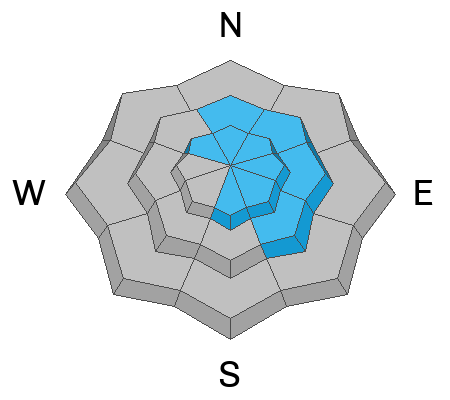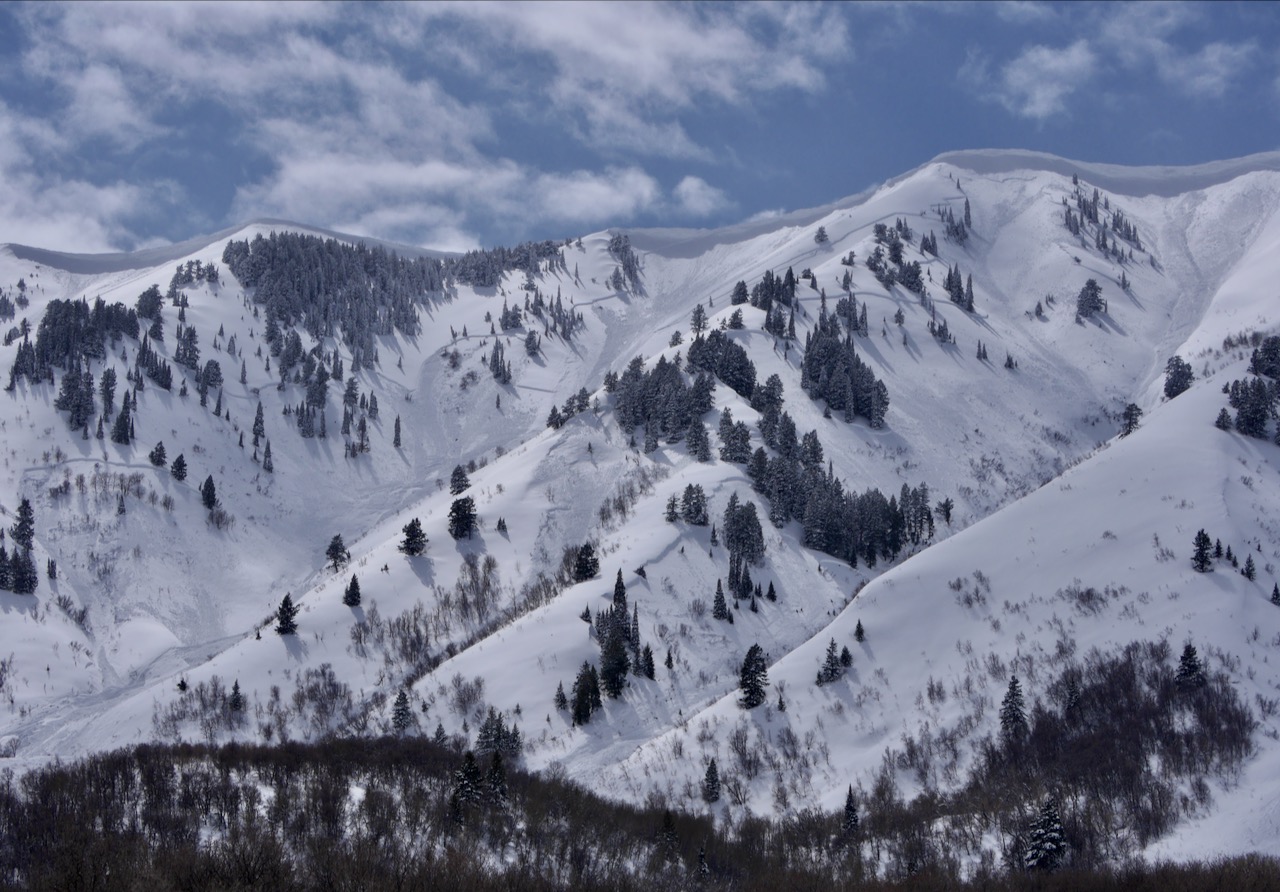Forecast for the Logan Area Mountains

Issued by Toby Weed on
Saturday morning, April 1, 2023
Saturday morning, April 1, 2023
There is HIGH avalanche danger at all elevations in the backcountry. People should avoid being in avalanche terrain, and stay clear of avalanche runouts. Very dangerous conditions are found in drifted terrain and on slopes that received significant accumulations of new snow. As temperatures rise today, wet avalanches entraining big piles of heavy saturated new snow are likely at low elevations and on sunny slopes.
We advise that you stay off of and out from under slopes steeper than 30°

Low
Moderate
Considerable
High
Extreme
Learn how to read the forecast here





 Very large and long running natural avalanches occurred in the Wellsville Mountain Wilderness with the last storm. (N Hell Canyon, 3-25-23)
Very large and long running natural avalanches occurred in the Wellsville Mountain Wilderness with the last storm. (N Hell Canyon, 3-25-23) Wet avalanches like this natural one in Right Hand Fork will become more likely as temperatures warm up today.
Wet avalanches like this natural one in Right Hand Fork will become more likely as temperatures warm up today.



